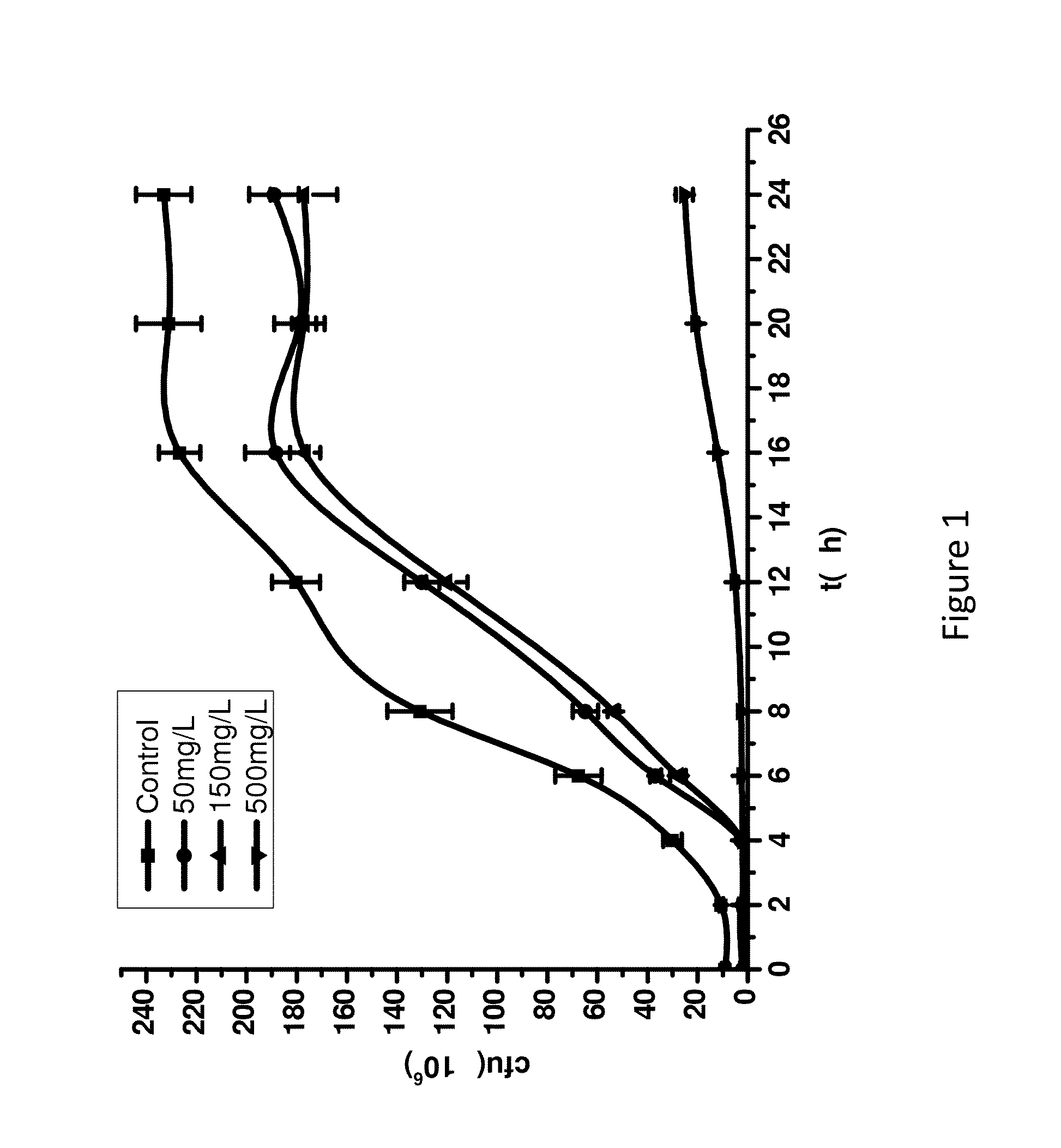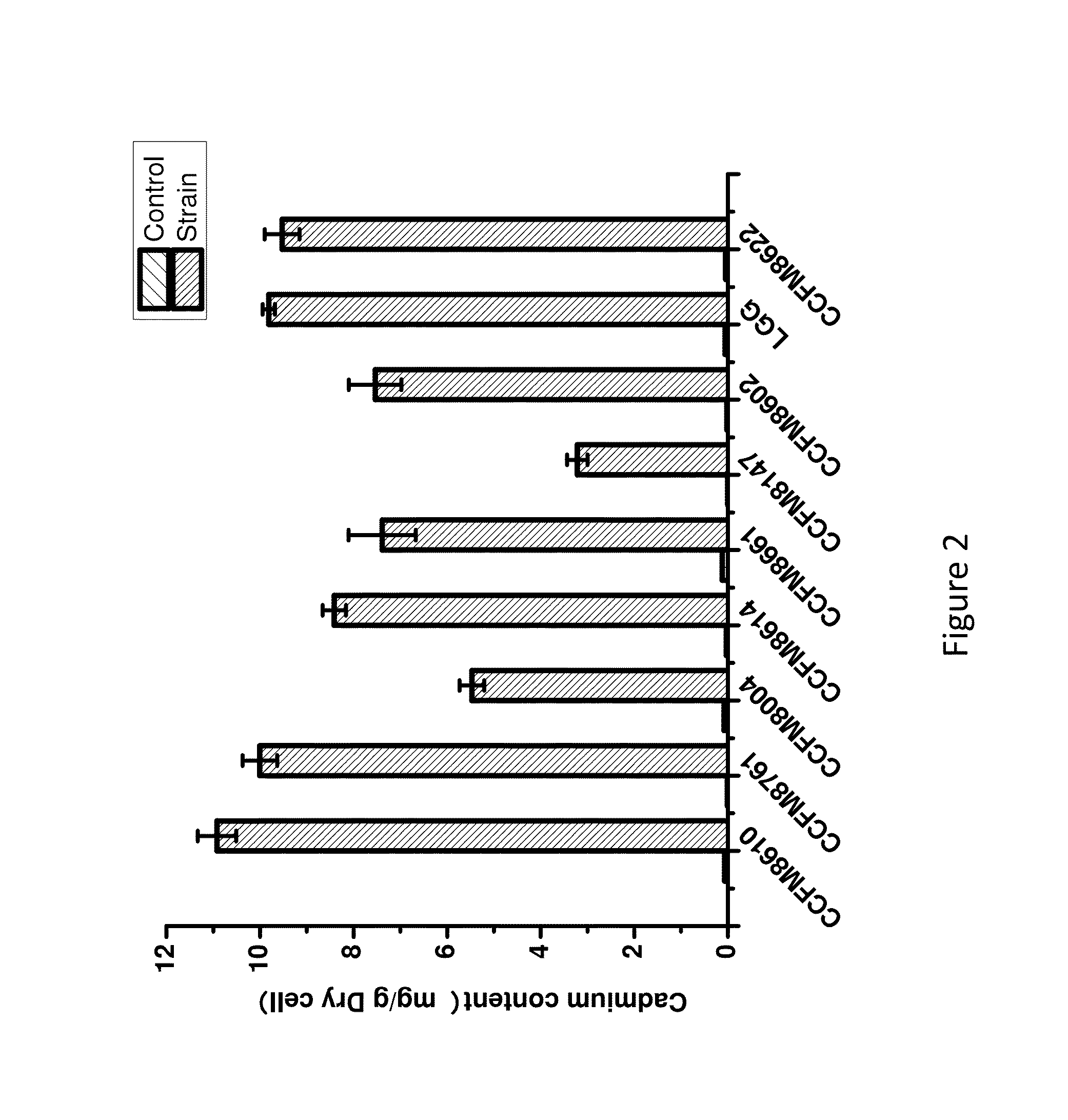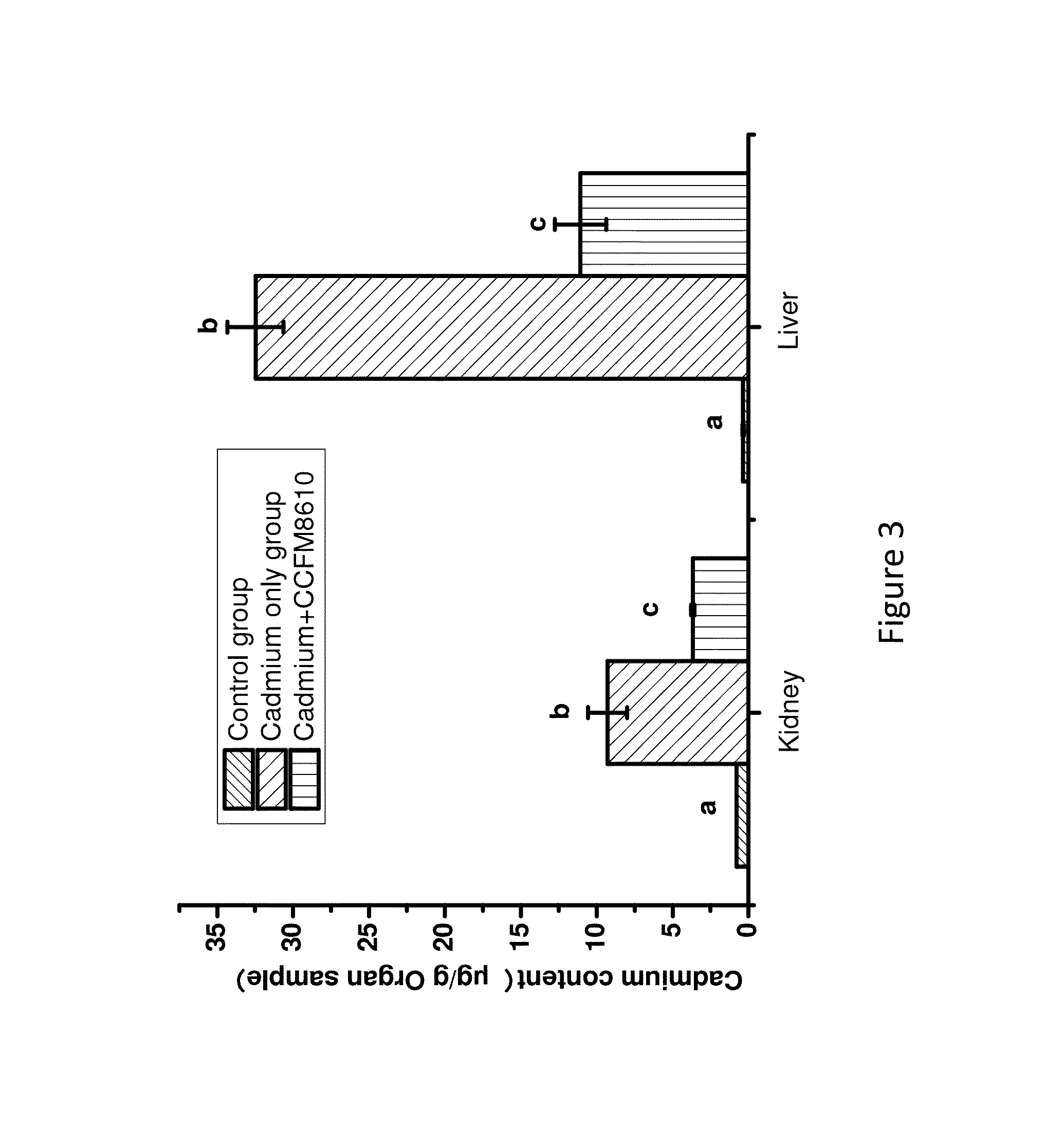New Strain of Cadmium-Removing Lactobacillus plantarum Bacterium, and Uses of the Same
a technology of lactobacillus plantarum and cadmium removal, which is applied in the field of microorganism technology, can solve the problems of cadmium contamination that is particularly serious, cadmium contamination is extremely harmful to human health, and the rice consumed by local residents is highly contaminated, so as to achieve good flavor, ensure acidity, and prolong storage time
- Summary
- Abstract
- Description
- Claims
- Application Information
AI Technical Summary
Benefits of technology
Problems solved by technology
Method used
Image
Examples
example 1
Cadmium Tolerance Capacity of Lactobacillus plantarum CCFM8610
[0092]The cadmium solution (150 mg / L) was prepared by dissolving 0.3423 g 3CdSO4.8H2O into 1 L water under sterile conditions. MRS culture medium is well known to those with ordinary skill in the art, which contains tryptone, yeast extract, glucose, sodium acetate, citric acid, diammonium glycyrrhizinate, Tween 80, magnesium sulfate and manganese sulfate, pH6.2-6.4. The cadmium-containing MRS medium (150 mg / L cadmium ion) was prepared by dissolving the MRS solid ingredients in cadmium solution (150 mg / L). Use the same method to make MRS culture medium with 50 mg / L and 500 mg / L cadmium ions.
[0093]2% (w / w) Lactobacillus plantarum CCFM8610 that entered stable phase were inoculated into the cadmium-containing media above and cultured under 37° C. Cell growth is determined by standard plate count at 0, 2, 4, 6, 8, 12, 16, 20, and 24 hours after the start of the culture. The cell growth curve of Lactobacillus plantarum CCFM8610...
example 2
Cadmium Binding Capacity of Lactobacillus plantarum CCFM8610
[0095]Nine lactic acid bacteria strains were isolated from the traditional Chinese foods (e.g. pickles and fermented milk wine) based on the acid tolerance selection criterion (e.g. able to grow under pH 3.0). The nine strains were purified and activated in the MRS medium. The activated bacteria were gently shaken until they were evenly distributed in the medium. They were then subjected to centrifugation at 6000 r / min for 15 minutes. The cell pellets were transferred into a cadmium-containing medium (150 mg / L) to a final bacterial concentration of 1 g / L. For the control group, the cells were transferred to deionized water. The cells were incubated at 37° C. for 1 hour. The cells were then centrifuged at 6000 r / min for 20 min, washed with sterile water, and centrifuged again. After the centrifugation, cell pellets were collected and digested in concentrated HNO3, and further digested in a microwave digestion oven for 20 min...
example 3
Determination of Mice Tolerance to Lactobacillus plantarum CCFM8610
[0097]The freeze-dried Lactobacillus plantarum CCFM8610 powder was suspended in skim milk to a final concentration 2.0×109 CFU / mL. The bacteria suspension was administered daily to ten healthy male Kunming mice (body weight: 20 g) via gavage for a week. The mice death rate and weight change was recorded for a week. The results were shown in the Table 1. The results showed that administration of Lactobacillus plantarum CCFM8610 at 2.0×109 CFU / mL has no significant effects on mice. The weight of mice increases over the time and no death is observed. The mice have no obvious pathological symptoms.
TABLE 1The change of mice weight fed with the Lactobacillus plantarumCCFM8610 at the concentration of 2.0 × 109 CFU / mLTime (d)1234567Weight (g)22.3 ± 2.922.9 ± 1.323.1 ± 2.223.2 ± 2.123.6 ± 0.924.6 ± 1.125.0 ± 1.2Death———————Note:—, no death.
PUM
 Login to View More
Login to View More Abstract
Description
Claims
Application Information
 Login to View More
Login to View More - R&D
- Intellectual Property
- Life Sciences
- Materials
- Tech Scout
- Unparalleled Data Quality
- Higher Quality Content
- 60% Fewer Hallucinations
Browse by: Latest US Patents, China's latest patents, Technical Efficacy Thesaurus, Application Domain, Technology Topic, Popular Technical Reports.
© 2025 PatSnap. All rights reserved.Legal|Privacy policy|Modern Slavery Act Transparency Statement|Sitemap|About US| Contact US: help@patsnap.com



